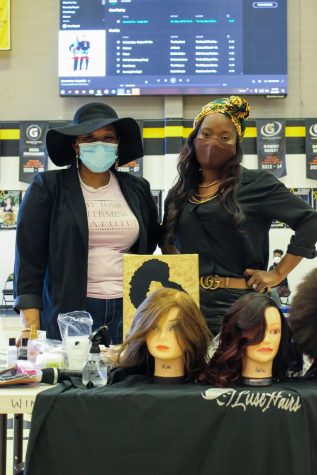Do the stereotypes that are placed onto our school cause student relationships with outside schools to be unhealthy?
The Dart Staff discusses the presence of stereotypes at STA and how they affect the students’ high school experiences.
January 23, 2022
Stereotypes ultimately can be found in almost every aspect of life, in terms of both positive and negative. They can affect parts of a person’s life so trivial as what state a person lives in or as significant as someone’s political ideas. Stereotypes spare no expense to those who attend single-sex schools; outsiders have many preconceived ideas about who the students are and what they represent.
At STA, the students have been labeled as rich, boy-obsessed people who attend a “daycare” instead of a traditional high school, when in reality these perceptions could not be further from the truth — especially the daycare stereotype. Over 72% of STA students take honors, college and AP classes in order to start preparing for the college application process; the first honors class a student can take at STA is a freshman year math course and the first AP class available is sophomore year world history class. STA starts to prepare its students for standardized testing, such as the ACT, in sophomore year when students take the PACT for the first time.
Of course, there are many traditions in the STA community that allow students to take a break from the academic rigor that is a constant stressor, but this does not mean that the students aren’t learning or doing homework for hours on end every night. It just showcases how the STA administration understands how much pressure the students are constantly under and believes that they deserve a break to have fun with their fellow classmates.
As for the boy-crazy stereotype, STA students choose to attend a school where there are no members of the opposite sex. Whether it be for no “distractions,” or the students ultimately feel more comfortable with no boys, it is their choice. Just because the students attend a school with no guys does not mean STA students don’t know how to act around them or need to worship the ground they walk on. Students from Notre Dame de Sion, another all-girl’s school in the Kansas City metro, relate to STA on these issues.
Out of 104 responses gathered anonymously from Sion, many students talked about how they felt relieved that there was no pressure from boys. Some claimed that the boys cause them to feel nervous and insecure, while others claimed that they don’t even notice that there are no males in their classes.
In most cases, STA and Sion understand each other and can relate, but some stereotypes have led the two schools to have an unwritten rivalry with each other since they are both all-girl’s schools and “must” compete with each other to prove who is the better school. These self-perpetuating stereotypes can lead to the same attitude year after year, creating a rift in the two schools’ relationship.
These preconceived beliefs have existed about all-girls schools for many decades and affect more than just the students here and at Sion. Every and any school can fall victim to the disease that is stereotypes; it is up to the students to invalidate these outside beliefs in order to showcase their school’s true character.
10/17 staffers agree









